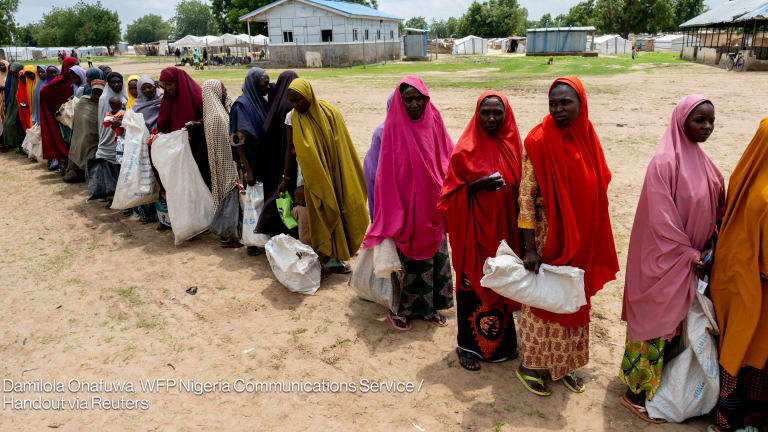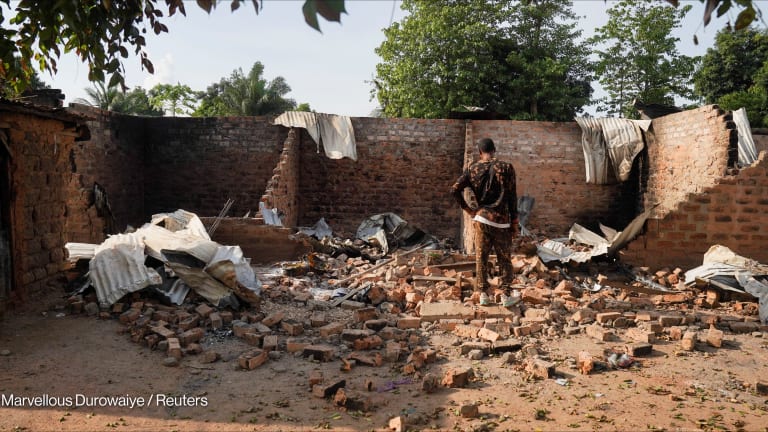
American officials from the military to Congress have effectively ruled out large land wars in the foreseeable future. A strategy that seeks to stabilize key countries with a minimal security presence necessarily puts a premium on preventing conflict before it begins.
This means using the tools of preventive diplomacy and investments in economic and social development, including governance. In a world in which more states are more fragile than ever, and low-intensity conflict threatens lives and core American values and interests, it is essential that democracies continue to invest in the right kind of development.
Development assistance has many aspects. Development affects and is affected by economic, political, religious, cultural, gender, natural resources and the environment. In a peaceful environment, development is complex. But if there is an element of conflict, development becomes even more difficult.
Few organizations have been able to successfully support development when conflict is present. Some development professionals believe that development cannot and should not be done in a conflict environment. They believe that the settlement of major conflicts is a prerequisite to development.
In between these two positions there are some traditional ways to approach this subject. Conflict has often been dealt with through a peacebuilding approach that emphasizes mediation and mitigation.
The nexus between development and conflict is particularly strong when development assistance is applied as a tool of foreign policy. This use of development assistance raises many other issues for development professionals who may or may not agree with the overall goals that are being pursued.
Development assistance in failed states or military conflict areas may attempt to incorporate prevention, mitigation, stabilization and reconciliation approaches while simultaneously injecting development assistance, which must be constantly refined to be effective in constantly changing and fluid environments. In recent years, it appears that there are an increasing number of conflicts that destabilize significant populations around the globe, including in Yemen, Somalia, Colombia and others. So, like it or not, development and conflict are juxtaposed upon each other.
For development approaches to be effective in these environments, they must be targeted and address specific sources of conflict – such as the uneven distribution of resources at the community level, perceived discrimination in labor markets, lack of government services, religious intolerance, or the perceived assault on cultural traditions. Often in conflict zones, all of these problems are exacerbated by an incredibly large youth population.
Approaches in this environment must target at-risk and vulnerable sub-populations such as rural farmers, marginalized youth, disenfranchised social or religious groups, nomadic peoples whose livelihoods are threatened, and displaced and disenfranchised urban migrants in ever growing slums.
The development assistance approach in conflict zones is further complicated because each variable is interconnected and cannot be addressed in isolation. Youth grievances stemming from a lack of education or employment opportunities may be rooted in structural problems, such as a lack of investment in teachers, vocational skills training, and information technology that makes students competitive. Poor governance, corruption, and weak rule of law discourage the investment required for the startup or expansion of businesses that create jobs. Development assistance programs must implement holistic strategies that address both the structural conditions and local grievances that, together, are the major drivers of instability.
Development groups that specialize in conflict situations attempt to apply stabilization and conflict mitigation approaches grounded in sound community development principles. These include:
Assistance that is adapted to specific contexts and responsive to constantly changing local, regional and national dynamics.
Locally targeted programs that are integrated with regional or national policies.
Crosscutting interventions that utilize more than one development sector.
Large-scale activities tailored to mitigate specific sources of conflict and address the major drivers of instability.
Interventions that transition from short-term into longer-term development.
Community participation and ownership, coupled with capacity building measures.
High-visibility strategic communications programs which reinforce and compliment the impact of other activities.
Coordination and cooperation with local and other international donor programs.
In developing its programming in conflict affected or post-conflict environments, International Relief and Development Inc. always attempts to apply sound development principles such as participatory planning and institutional strengthening coupled with targeted and measurable interventions. These development practices are often implemented through a stabilization lens that prioritizes the gains in credibility for the local government. IRD emphasizes process as well as end results and deepens relationships between key community stakeholders. It measures the effect of these interventions against the identified drivers of instability. We coordinate activities within the whole-of-government framework, integrating with the U.S. Agency for International Development, State Department, international donors and host nation governments and civil society organizations – and when necessary and appropriate, with national and international military actors such as the International Security Assistance Force in Afghanistan.
The largest threat to vulnerable people, and the peace and prosperity of the global community, is conflict and instability. Those caught in conflict must be assisted, both with relief and through long-term social and economic development. It can be done. And it must be done if we are to maintain and extend the gains of all those who have worked for years to create the framework of a truly global community driven by the shared values that have motivated the American people.








